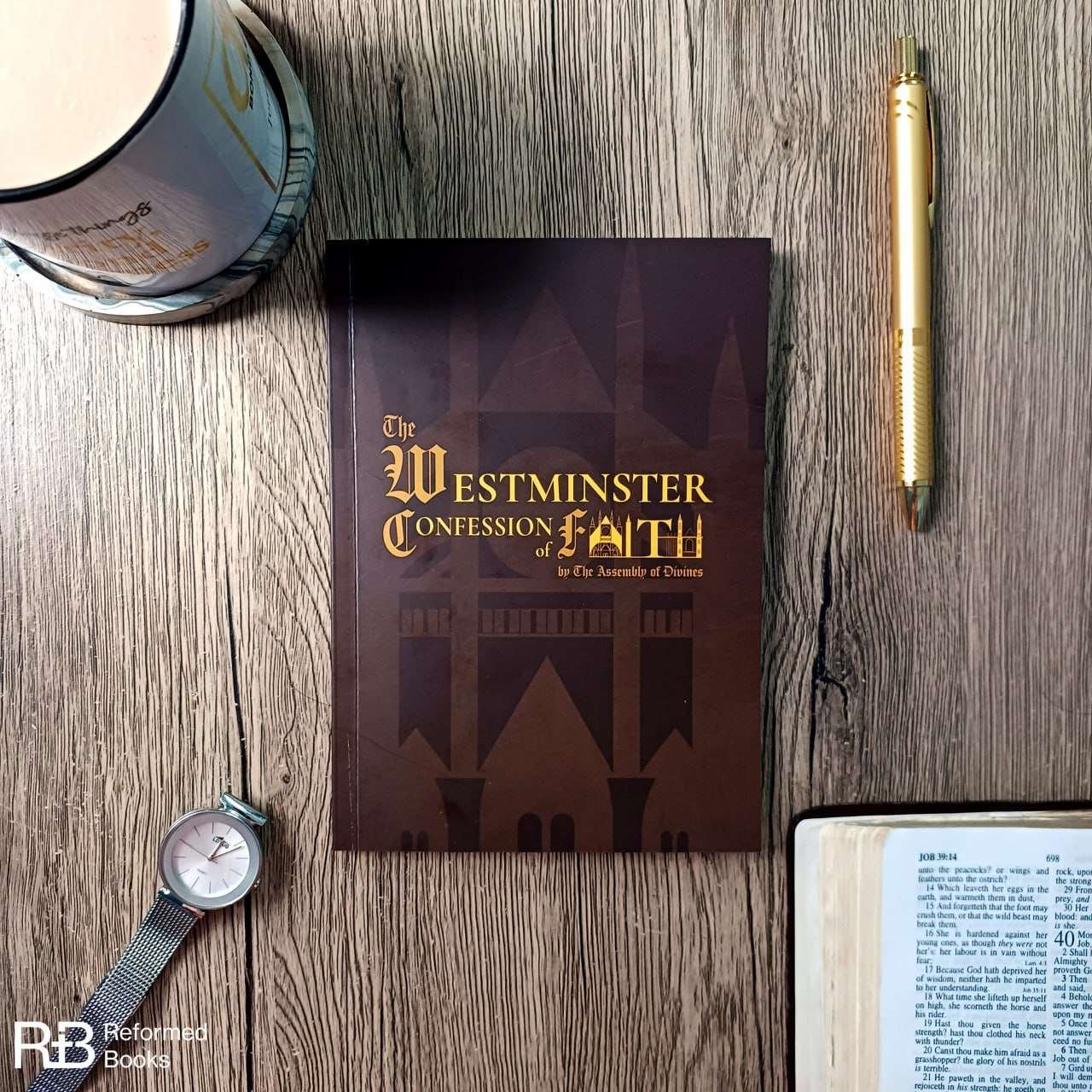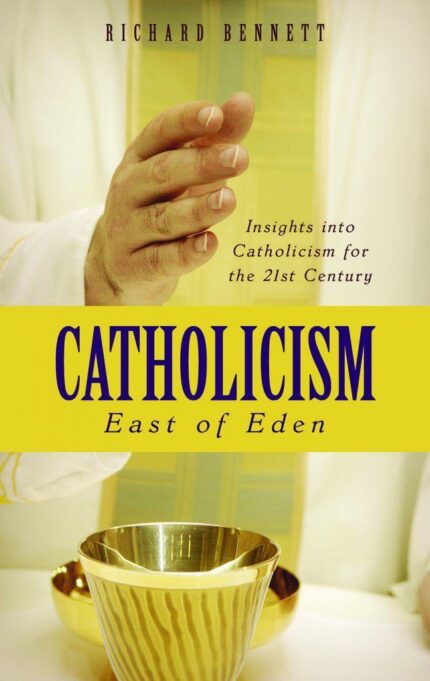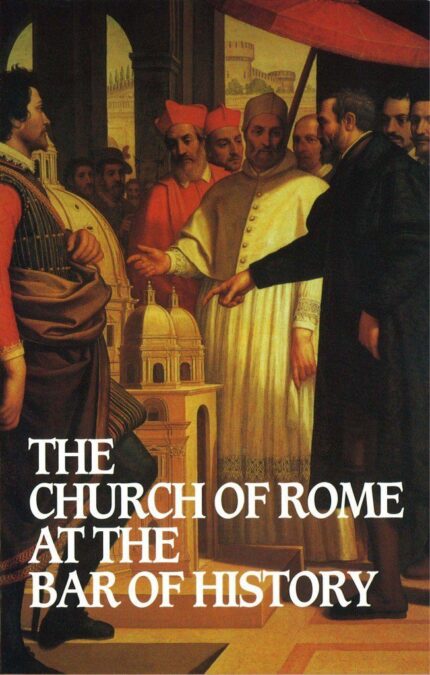Roman Catholicism: East of Eden
Catholicism – East of Eden
Catholicism: East of Eden
All human beings want to approach God in a way that pleases themselves. That is…
All human beings want to approach God in a way that pleases themselves. That is no surprise: we all are proud and self-righteous, and by nature disobedient to the revealed will of God. That was the ancient problem Cain had faced when he went out from the presence of God to live ‘east of Eden’ – and it continues to be the moral struggle of the 21st century. Always what is most needed in such a struggle is an unquenchable desire to possess and to be possessed by the Truth.
How is Catholicism ‘east of Eden’? Worldwide interest in all things Catholic mixes with consternation over recent disclosures from within the Church. Amidst doctrinal and moral confusion, most issues remain unanalyzed and unexplained, leaving both Catholics and non-Catholics wondering where the Roman Catholic Church stands. This book will leave no doubt about the truthful answer.
WHEN & WHERE: Published in 2010, UK, it is now available in India.
WHY was this book written: To inform and educate readers on 21st century issues of Catholicism with candour and empathy, while offering a unique perspective from someone intimately familiar with Catholicism.
HOW: “Catholicism East of Eden” by Richard Bennett offers a comprehensive examination of the Catholic Church and its doctrines, drawing from the author’s personal experience as a former Catholic priest. Each topic is carefully documented so that the reader who wishes to know for certain if what is written here is true can easily find the information.
WHAT:
The book covers a wide range of topics, including the authority of the Bible, the role and history of the papacy, sacraments like baptism and the Eucharist, the veneration of Mary, the institution of marriage, and the experiences of convent life. Bennett explores the differences between Catholicism and Protestantism, shedding light on theological distinctions and historical developments. He also addresses the alignment of certain Evangelical groups with Catholicism, providing readers with a thorough analysis of the beliefs and practices of the Catholic Church compared to Protestant Christianity. Here is a book that speaks to both mind and heart.
Topics Include:
– From Tradition to Truth: A Priest’s Story
– The Lord Gave His Word: Unshakeable Authority
– The Mystique of the Catholic Priesthood
– The History of the Papacy from Its Inception to the Reformation
– The Response of the Papacy to the Reformation
– The Papal Claim to Have the Keys of the Apostle Peter
– Baptism, Confirmation, and the Anointing of the Sick
– Encounters in the Confession Box
– The Mass as a Sacrifice
– Holy Communion
– The Mystic Plague
– Images of Christ and the Gospel
– The Biblical Mary and Tradition
– God’s Institution of Marriage, Not Papal Rome’s
– Convent Life
– Biblical Unity in the Lord and Papal Conformity
– The Alignment of New Evangelicals with Catholicism
– A Concluding Portrait of Catholicism
– Appendices:
– The Scripture Given to the Early Church
– The Apocrypha
– The Church as the Pillar and Stay of the Truth
– The Bible and the Catechism Compared
WHO: Richard Bennett was born into a devout Roman Catholic home in Dublin Ireland. His early years were spent in Belvedere Jesuit School. Eight years of theological instruction for the priesthood followed under the instruction of the Dominican Order with his formal education culminating in 1964 at the Angelicum University of Rome.
As a young priest, Richard (Peter) was assigned to the West Indies. He spent the next twenty-one years in Trinidad, mostly serving as a parish priest applying Roman Catholic teaching to everyday life. After a serious accident in which he nearly lost his life, he began to seriously study the Scriptures. After fourteen years of contrasting the teachings of Rome with biblical truth, he was convicted by the Gospel message through God’s grace alone and in 1986 he formally left the Roman Catholic Church and its priesthood.
Richard has since founded an evangelistic ministry called ‘Berean Beacon’ which brings the truth of God’s plan of salvation to many worldwide.
2. Church of Rome at the Bar of HIstory
Church of Rome at the Bar of History
In all the confusion of the contemporary religious scene, one Church claims to abide changeless…
WHEN & WHERE: 1995, Printed in Finland.
WHO: William A. (“Bill”) Webster is the founder and director of Christian Resources, a non-profit, teaching, apologetics and publishing ministry dealing with issues related to Roman Catholicism, Eastern Orthodoxy, the Gospel, Church history and the Christian life. The ministry is dedicated to the teaching and proclamation of the Gospel, a biblical and historical defence of the teachings of the Reformation and the discipling of believers in their Christian walk.
Bill Webster also serves as pastor of Grace Bible (Reformed Baptist) Church in Battle Ground, Washington, founded in 2002. He has been a guest on Christian talk radio, and has been the featured speaker at several Bible conferences dealing with the Christian life. He has a B.A. degree in History from Southern Methodist University and is a graduate of the Evangelical Institute in Greenville, South Carolina.
WHY was this book written: To question the veracity (truthfulness / authenticity) of the Roman Catholic Church’s claim — that she abides changeless in her message and authority, and stands by one faith from the first, and through the age.
Thus, with Louis XVI, multitudes have seen her as the sure way to paradise: ‘I die,’ said the French king, ‘in union with our Holy mother, the Catholic, Apostolic and Roman Church which holds its powers uninterrupted from St. Peter.’ ‘I believe in what the Catholic Church holds and teaches,’ declared the Duchess of Kent on her recent conversion.
HOW: The author clarifies the confusion of the contemporary religious scene and answers the question — not by debating texts of Scripture — but by a straight appeal to the very area where the Church of Rome believes her case is strongest, the facts of history. He shows that much which Roman Catholicism now claims as part of her changeless creed was both unknown to the Church Fathers of the early centuries and directly contrary to what they did teach. This very disturbing book is no dry account of minor differences, nor is it a harsh polemic. The author writes with heart-felt interest in the welfare of the men and women who are now in a position which was once his own.
WHAT: The book delves into critical theological aspects of the Roman Catholic faith and its relationship with Scripture and tradition. It explores topics such as the authority of Scripture, the interplay between Scripture and tradition, the history of the papacy and its claims, including papal infallibility, and the doctrinal positions surrounding Marian dogmas, salvation, the Eucharist, faith, and justification within Catholicism. The appendices offer additional insights by referencing early church fathers, documents from Vatican I and II, and writings from notable figures like Thomas Aquinas, Martin Luther, and John Calvin. Altogether, the book provides a comprehensive examination of the doctrinal differences between Roman Catholicism and other Christian traditions, with a particular focus on the authority of Scripture and its role in shaping religious beliefs and practices.
Here’s a Quote: “The basis on which Christians accept the inspiration or Scripture is because the Scriptures themselves make that claim. This is significant if they did not claim divine inspiration for themselves then we would have no right to claim it for them.”
Contents include:
– Introduction
– The Authority of Scripture
– Scripture and Tradition
– Tradition and Roman Catholicism
– The Papacy and the ‘Rock’ of Matthew 16
– Papal Authority and Infallibility: The Test of History
– Marian Dogmas
– Salvation and the Sacramental System
– The Eucharist
– Faith and Justification
– Truth: The Defining Issue
– APPENDICES
1) The Fathers on the Meaning of Tradition and its Relationship to Scripture
2) Vatican I and Vatican II on Papal Infallibility
3) The Bull Unam Sanctam by Boniface VIII
4) Vatican I and Vatican II on Papal Primacy
5) Writings of the Fathers on the Meaning of the Rock and Keys of Matthew
6) Letter of Gregory the Great to John of Constantinople Objecting to his Adoption of the Title Universal Bishop
7) The Official Teaching of the Roman Catholic Church on the Person of Mary
8) The Fathers on the Real Presence and the Eucharist
9) The Fathers on the Eucharistic Sacrifice as not being Propitiatory in Nature but a Memorial of Thanksgiving and Praise
10) Thomas Aquinas on the Nature of Faith
11) Martin Luther and John Calvin on the Relationship Between Justification and Good Works
12) Comments of the Fathers on the Nature of Justification
13) The Teaching of the Council of Trent on Justification
– Notes
– Index
3. Are we Together? A Protestant Analyzes Roman Catholicism
WHO: R.C. Sproul, a prominent theologian, founder of Ligonier Ministries, and a PCA (Presbyterian Church of America) pastor known for his Reformed Christian perspective.
WHAT: The author analyses six critical areas of disagreement between Rome and evangelicalism. He addresses scripture, justification, the church, the sacraments, the papacy, and Mary. Each topic is addressed in separate chapters and includes Rome’s stance (without caricature) vis a vis the biblical view of Protestantism.
WHEN & WHERE: Published by Ligonier Ministries, US, 2012
WHY: Sproul wrote this book to affirm the crux and heart of the pure Gospel, as understood and propounded by Protestant, Biblical & Reformed Christianity. At just 130 pages, it is intended more as an introduction to the Roman Catholic Church and the most crucial issues, instead of a detailed comprehensive overview of the whole host of ecumenical issues at hand.
HOW: Sproul shows that the RC teachings are enduring and still in effect. He shows that the contradiction in doctrinal statements of mainline Protestantism and Roman Catholicism, prima facie, would not permit unity.
In the author’s own words,
In this book, I have a simple goal. I want to look at Roman Catholic teaching in several significant areas and compare it with Protestant teaching. I hope to show, often using her own words, that the Roman Catholic Church has not changed from what it believed and taught at the time of the Reformation. That means that the Reformation is not over and we must continue to stand firm in proclaiming the biblical gospel.
Quotes:
The fundamental difference was this. [The Roman Catholic council of] Trent said that God does not justify anyone until real righteousness inheres within the person. In other words, God does not declare a person righteous unless he or she is righteous. So, according to Roman Catholic doctrine, justification depends on a person’s sanctification. By contrast, the Reformers said justification is based on the imputation of the righteousness of Jesus. The only ground by which a person can be saved is Jesus’ righteousness, which is reckoned to him when he believes.
My sin goes to Jesus and His righteousness comes to me. This is a truth worth dividing the church. This is the article on which the church stands or falls, because it is the article on which we all stand or fall.




